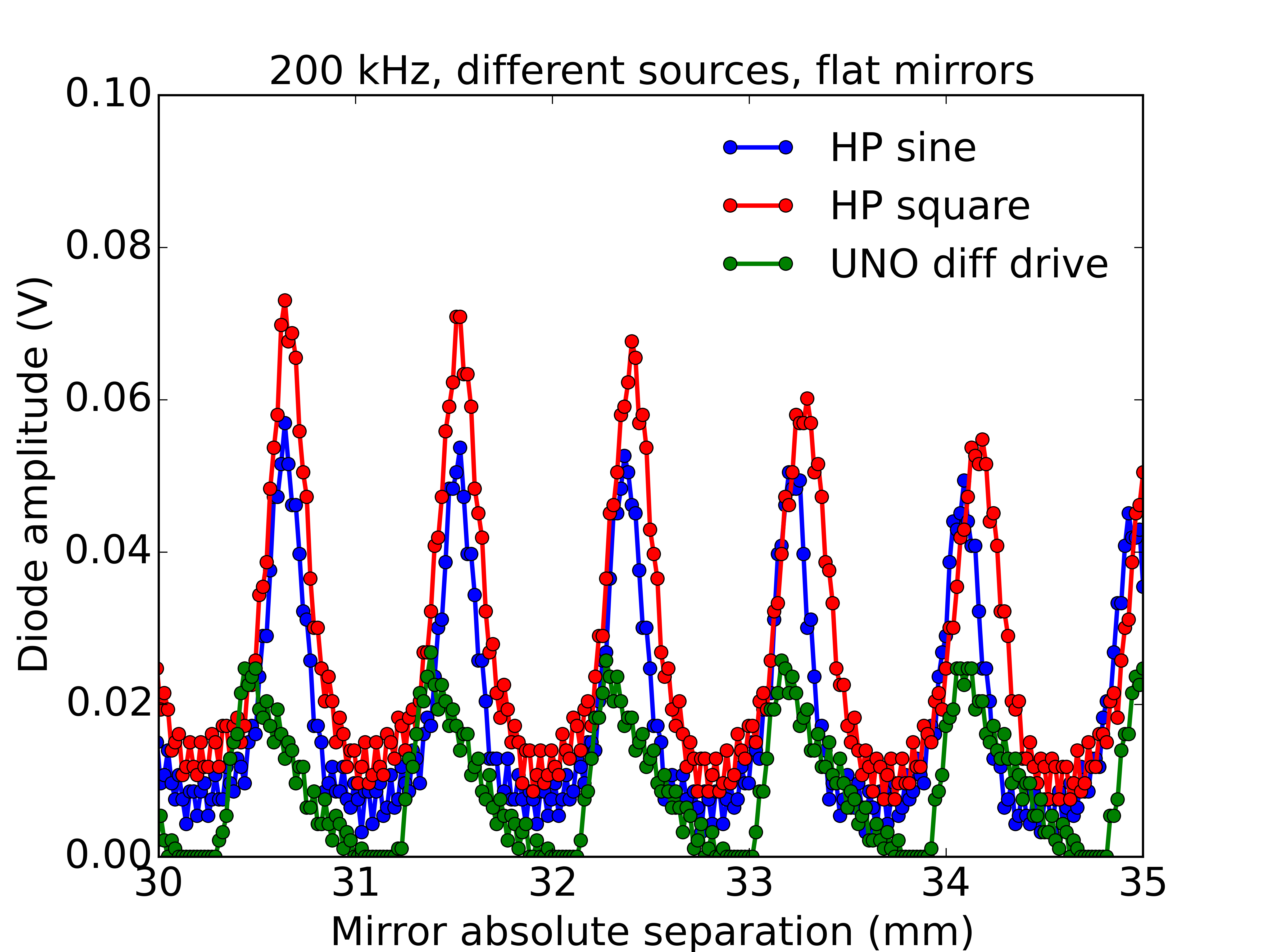I'd been noticing an asymmetric lineshape on the interference maxima at 40 kHz and it became particularly obvious at 200 kHz. I suspected two possible causes, either vibration on the moving state modulating the path length or phase noise/jitter on the ultrasound transmitter drive. I used a old but good quality HP function generator from my work lab to help me pin-point the cause.
The graph shows a zoom-in for scans at 200 kHz with different sources driving the transmitter. I used the HP source to drive with either a sinusoid or a square wave. And I used the timer generated square wave on the UNO for comparison. I was surprised to find such a big difference between the UNO and HP data. The HP data is clearly much more as one would expect for a Fabry-Perot, showing that the spectral purity of the UNO timer generated signal (at least as it is used now) is not good enough for this application.
I was even more suprised to find a difference between the HP sinusoid and square-wave drive, with the sinusoid yielding higher Finesse. I expected that the Fourier components of the square wave would be too high in frequency to affect the narrowband transducer but perhaps this was wrong.
 So this gives me a challenge, to implement a digitally tunable sinusoidal drive in a compact and cheap way. One of the many options would be to use an AD9850 DDS chip. Or perhaps I can use a Si5351 clock generator and low pass filter the output. Needs some thought but it will clearly be worthwhile to use a better oscillator.
So this gives me a challenge, to implement a digitally tunable sinusoidal drive in a compact and cheap way. One of the many options would be to use an AD9850 DDS chip. Or perhaps I can use a Si5351 clock generator and low pass filter the output. Needs some thought but it will clearly be worthwhile to use a better oscillator.
 Andrew Ferguson
Andrew Ferguson
Discussions
Become a Hackaday.io Member
Create an account to leave a comment. Already have an account? Log In.